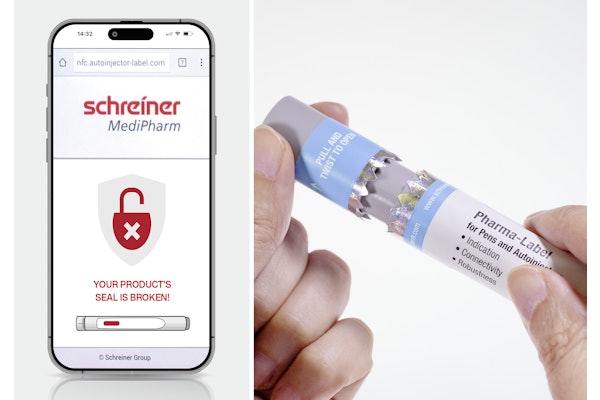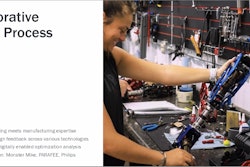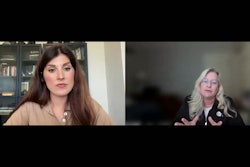Pharmaceutical innovation and development represents an important aspect of the Latin American economy, with sales of US$24 billion in 2005, up 18.5 percent from 2004. Mexico, Brazil, and Argentina are the three largest markets in the region and were responsible for more than 80 percent of the region’s sales in 2005. That’s according to InfoAmericas, a conductor of research and business intelligence across Latin America and the Caribbean. In 2005, the combined annual growth rate of the top seven markets in the region reached 7 percent.
Mexico accounted for 37 percent of all pharmaceutical sales in the region, a 13-percent increase in 2005. Gains are mainly due to the country’s growing economy, as well as the government’s recent moves to expand healthcare. In 2005, domestic production amounted to nearly US$8 billion, representing about 1 percent of GDP for that year. Annual growth in Mexico is expected to remain at 12 percent through 2010, fueled by the overall economy and the expiration of more than 5,000 pharmaceutical patents. Multinational manufacturers are increasingly eyeing this attractive and growing market.
In such a dynamic market, industries such as pharmaceutical packaging play a decisive role. Packaging is an essential part of the pharmaceutical industry and shapes the way medications are distributed, transported, displayed, and sold to consumers.
Several factors come into play when determining what type of package will be used for a given medication. The most visible one is consumer marketing. Especially with over-the-counter medications, companies aim to manufacture packaging materials that appeal to customers. They may incorporate logos, typefaces, and colors that portray a serious, professional, and trustworthy image. Companies also package their medications conducive to their target market, for example, for seniors or children.
Another important factor is cost control. Some packaging materials offer superior barriers to the environment but at a higher cost. The decisive factor is the medication’s characteristics. Medications have different characteristics based on their active ingredients, which determine the degree to which a substance has to be protected from, say, moisture or light.
Packaging types can be divided into three broad categories: glass packaging, plastic bottles, and flexible packaging. Flexible packaging can be further divided into sachets, blisters, pouches, and laminated tubes. Many flexible packaging types are also used for medical devices such as catheters, needles, surgical tools, and gauze.
The pharmaceutical packaging market in Mexico in 2006 was valued at US$32 million. Flexible packaging accounted for 58 percent, plastic bottles made up about 35 percent, and glass packaging 7 percent. There are some medications that require a glass container due to the solution’s characteristics. Blisters and other flexible packaging types have increased significantly as the leading packaging choice. These products are available in different sizes, colors, and characteristics that provide different permeability against moisture, dust, and light. A blister can be manufactured from a combination of PVC and aluminum in order to increase protection from sunlight. For other needs, the material mix might include HDPE, aluminum, and paper.
New developments in medication presentations, such as chewing gum and chewable medications, are increasingly popular because of the ease of ingesting the active ingredient. These medications are invariably packaged in blisters or plastic bottles due to their characteristics, driving the increased popularity of these two types of packaging. Production regulations and requirements are a further factor to take into account. A country’s health ministry or secretariat is in charge of regulating and supervising drug manufacturing.
Outsourced manufacturing is increasing by all the players in the Mexican market. As medications evolve and become more specialized, the need to specialize production also increases. The toll manufacturing and contract packaging markets in Mexico amounted to US$7.9 billion in 2005, clearly showing its importance to the pharmaceutical companies.
Overall, the pharmaceutical packaging industry in Mexico is expected to grow at an average rate of about 7 percent in the coming 10 years. Flexible packaging is expected to grow at 9 percent during the same time period. The ensuing 10 years should see important adaptation of the domestic packaging manufacturing capability to that of more sophisticated markets. The introduction of specialized active ingredients as well as innovative medication presentations will cause market dynamics to move toward a maturing market, in which not the strongest but the smartest players will remain competitive.
By Mario Rubio, project manager and consultant at InfoAmericas. Article used with permission.
Mexico accounted for 37 percent of all pharmaceutical sales in the region, a 13-percent increase in 2005. Gains are mainly due to the country’s growing economy, as well as the government’s recent moves to expand healthcare. In 2005, domestic production amounted to nearly US$8 billion, representing about 1 percent of GDP for that year. Annual growth in Mexico is expected to remain at 12 percent through 2010, fueled by the overall economy and the expiration of more than 5,000 pharmaceutical patents. Multinational manufacturers are increasingly eyeing this attractive and growing market.
In such a dynamic market, industries such as pharmaceutical packaging play a decisive role. Packaging is an essential part of the pharmaceutical industry and shapes the way medications are distributed, transported, displayed, and sold to consumers.
Several factors come into play when determining what type of package will be used for a given medication. The most visible one is consumer marketing. Especially with over-the-counter medications, companies aim to manufacture packaging materials that appeal to customers. They may incorporate logos, typefaces, and colors that portray a serious, professional, and trustworthy image. Companies also package their medications conducive to their target market, for example, for seniors or children.
Another important factor is cost control. Some packaging materials offer superior barriers to the environment but at a higher cost. The decisive factor is the medication’s characteristics. Medications have different characteristics based on their active ingredients, which determine the degree to which a substance has to be protected from, say, moisture or light.
Packaging types can be divided into three broad categories: glass packaging, plastic bottles, and flexible packaging. Flexible packaging can be further divided into sachets, blisters, pouches, and laminated tubes. Many flexible packaging types are also used for medical devices such as catheters, needles, surgical tools, and gauze.
The pharmaceutical packaging market in Mexico in 2006 was valued at US$32 million. Flexible packaging accounted for 58 percent, plastic bottles made up about 35 percent, and glass packaging 7 percent. There are some medications that require a glass container due to the solution’s characteristics. Blisters and other flexible packaging types have increased significantly as the leading packaging choice. These products are available in different sizes, colors, and characteristics that provide different permeability against moisture, dust, and light. A blister can be manufactured from a combination of PVC and aluminum in order to increase protection from sunlight. For other needs, the material mix might include HDPE, aluminum, and paper.
New developments in medication presentations, such as chewing gum and chewable medications, are increasingly popular because of the ease of ingesting the active ingredient. These medications are invariably packaged in blisters or plastic bottles due to their characteristics, driving the increased popularity of these two types of packaging. Production regulations and requirements are a further factor to take into account. A country’s health ministry or secretariat is in charge of regulating and supervising drug manufacturing.
Outsourced manufacturing is increasing by all the players in the Mexican market. As medications evolve and become more specialized, the need to specialize production also increases. The toll manufacturing and contract packaging markets in Mexico amounted to US$7.9 billion in 2005, clearly showing its importance to the pharmaceutical companies.
Overall, the pharmaceutical packaging industry in Mexico is expected to grow at an average rate of about 7 percent in the coming 10 years. Flexible packaging is expected to grow at 9 percent during the same time period. The ensuing 10 years should see important adaptation of the domestic packaging manufacturing capability to that of more sophisticated markets. The introduction of specialized active ingredients as well as innovative medication presentations will cause market dynamics to move toward a maturing market, in which not the strongest but the smartest players will remain competitive.
By Mario Rubio, project manager and consultant at InfoAmericas. Article used with permission.



















